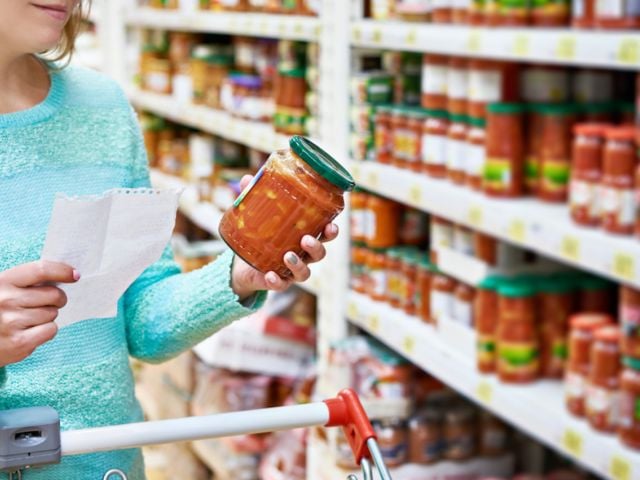
Critics of the federal Supplemental Nutrition Assistance Program, or SNAP (previously known as food stamps) claim some recipients are wrongly receiving benefits after winning lottery jackpots. SNAP fraud is serious. Those who are not in need and improperly receive benefits are taking precious resources from people desperate to feed their families in our slowly healing economy. Thankfully, according to the US Department of Agriculture, SNAP fraud is limited.
SNAP funding is authorized under the federal farm bill. The Senate agriculture committee is crafting its version of the bill in the coming weeks. A hearing on the commodity title – farm subsidies – is scheduled for Wednesday.
So here’s our question: would critics of SNAP exhibit the same level of outrage if they learned that several Roby, Texas, cotton farmers shared a $46 million dollar jackpot in 1996 and still receive hundreds of thousands of dollars apiece in federal subsidies for years after?
From the December 8, 1996, edition of the Houston Chronicle:
Forget the silk shirts, Cuban cigars and $12,000 cases of Chateau Latour. Park those dreams of a Mercedes S-600 coupe at the curb. This tiny West Texas farm town's newly minted millionaires - winners of the Thanksgiving-eve $46 million Texas Lottery - have more pressing concerns: paying bills and picking cotton.Down at Terry's Gin, the town's social center and birthplace of the successful lottery pool, the 43 winners last week signed papers that will transform them from financially strapped, sweat-stained sons of the soil to solidly middle-class farmers and agribusinessmen with a bounce in their step and a jingle in their pockets.
The “Roby 43” and their lottery win is an uplifting tale -- and we don’t begrudge them their good fortune. But in the context of the ongoing debate of food stamp eligibility, five members of the cotton-farming Terry family won the lottery and also received federal farm subsidies between 1997 and 2010 in these amounts:
Mike Terry – lottery winner in 1996 and a recipient of $1,120,236 in federal farm subsidies from 1997-2010.
Gene Terry – lottery winner in 1996 and a recipient of $353, 591 in federal farm subsidies from 1997-2010.
Vernon Terry – lottery winner in 1996 and a recipient of $401,164 in federal farm subsidies from 1997-2010.
Jeremy Terry – lottery winner in 1996 and a recipient of $325,366 in federal farm subsidies from 1997-2010.
Jo Ann Terry – lottery winner in 1996 and a recipient of $592, 070 in federal farm subsidies from 1997-2010.
If this strikes you as odd, welcome to the upside-down world of the farm subsidy system of gross inequities and deep unfairness. While farm income has been setting records year after year, the largest agribusinesses have taken in the bulk of subsidy payments. And in a budget crisis, millions of taxpayer dollars still go to well-off landowners and investors living in American cities like New York, Miami, Chicago and San Francisco, far removed from farm country.
And while the 2008 farm bill lowered the income limit for farm subsidies, the level is still hundreds of thousands of dollars higher than the income of an average American. According to USDA the new rules are:
For direct payments, a person or legal entity with adjusted farm gross income of over $750,000, averaged over previous 3 years, is not eligible.For direct payments, counter-cyclical payments, average crop revenue election, marketing loan gains or loan deficiency payments, noninsured crop assistance, milk income loss contract program payments, or disaster assistance payments or benefits, a person or entity with average adjusted gross nonfarm income in excess of $500,000 is not eligible.
The AGI limits for farm subsidies can be doubled for a married couple, so they can earn up to $1.5 million in farm income and $1 million in off-farm income.
Between 2003 and 2006, USDA made subsidy payments to 2,702 farm operations exceeding the means test, according to the Government Accountability Office, the Congressional watchdog agency. Most of those recipients actually lived in cities. One was an insurance company executive. Another owned part of a professional sports franchise.
Between 2006 and 2009, taxpayers reporting $1 million or more in net farm income received more than $283 million in farm program payments, according to a recent analysis by Sen. Tom Coburn (R-OK). And no matter how large or profitable the farm, taxpayers now are obligated to subsidize the premium on as much "crop insurance" coverage the farm decides to buy. Taxpayers also pay insurance companies to underwrite policies and bear a portion of the claims. And most policies actually insure against loss of revenue if price or production falls, not just against weather-related losses.
Now compare the lax farm income limits to the stringent process for SNAP benefits. They disqualify any individual earning more than $14,160 a year and a family of four earning more than $29, 064.
In 2010, the average payment to the top 10 percent of subsidized farms was $38,411. The maximum SNAP yearly benefit is $2,400 for an individual and $8,016 for a family of four.
We at Environmental Working Group aren’t suggesting that the Terry family has done anything wrong, because their payments are all legal and above board. Which isn’t surprising considering that, as reported by the Politico, the man who represents the Terry family in Congress, Rep. Randy Neugebauer (R-Texas) has “implored his leadership to leave agricultural subsidies alone and cut food stamps.”
But the farmers of Roby, Texas, can’t be the only lucky ones out there.



